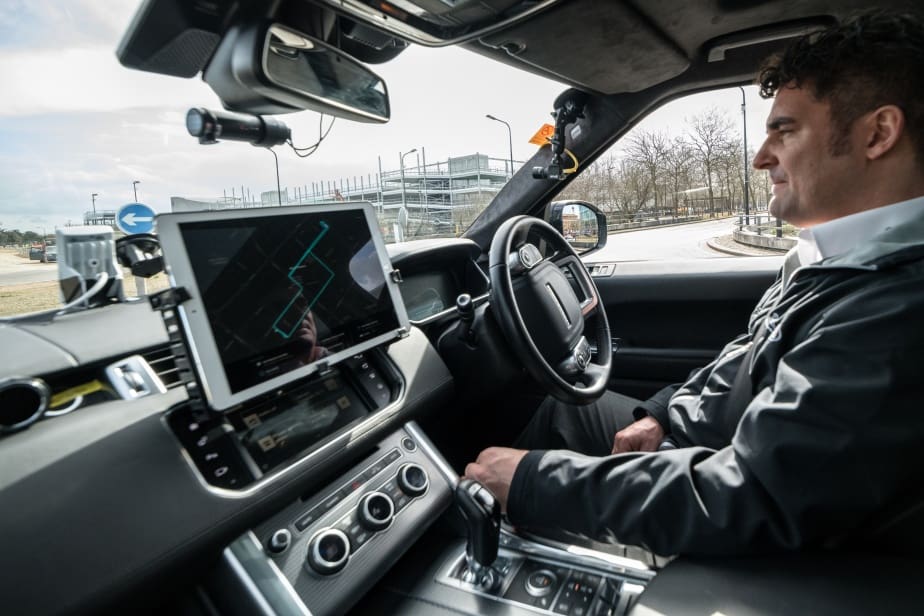Richard Porter explains some of the cyber-security issues facing developers of connected autonomous vehicles and outlines how collaboration can help address them.
The first prediction around self-driving vehicles came in 1940 in the book ‘Magic Motorways’ by Bel Geddes who, in promoting the idea of motorways, argued that humans should be removed from the driving process. While Bel thought self-driving vehicles might become a reality in the 1960s, it has only been in the last five to ten years that the various aspects of technology needed for a true self-driving car such as, radar, LIDAR and real-time machine learning have become more viable for the consumer market. Moore’s Law is also aiding the development of self-driving cars as it continues to deliver more cost effective, compact high-performance computing, which enables deep learning algorithms to deliver real-time machine perception that distinguishes between people and other vehicles.
Today, there are already self-driving vehicles testing on public roads in the UK and across the globe. As these tests progress, the industry is building a better picture of how to deal with some of the challenges unique to connected and autonomous vehicles. But how far away are we from achieving at scale deployments? What’s clear is different stakeholders throughout government, tech companies, OEMs and test facilities, will need to come together and develop new tools to drive deployment and adoption to help the UK achieve the promised benefits of the self-driving revolution over the next decade.
Collaboration is key
The infrastructure behind autonomous vehicles will be complex. Sharing data on road position and hazards with roadside infrastructure, like traffic lights, will bring early benefits on congestion and pollution through green light optimisation. Beyond that, regional and national systems could inform traffic patterns to regulate traffic flow.
To date, the only real interaction manufactures have had to consider between vehicle and infrastructure has been between rubber and asphalt. The telecoms sector will play a vital role, be that over 4G or 5G, vehicles will need fast and secure connectivity. Legal and insurance guidelines will need to be updated concurrently to remain in line with connected autonomous vehicle (CAV) developments. Discussions between these various stakeholders are already taking place and collaboration will be key to securing public trust and acceptance of self-driving vehicles.
Collaborate for safety
It is critical we start developing capabilities now to ensure we are ready for the mass deployment of autonomous vehicles. If we don’t, in the future we will become a buyer of CAV technology rather than a developer – the time to invest is now. The UK has some key strengths it can build upon – we are a world leader in cyber security innovation and are regularly ranked in the top three global players. At Meridian we are hosting a series of cross-industry roadmap workshops with the goal of creating a roadmap which outlines the steps which need to be taken between now and 2030 for a self-driving future. Such collaboration is vital to ensure the development of steps, safeguards and solutions to safely deploy Connected Autonomous Vehicles (CAVs).
Collaborate for trust
Autonomous vehicles may fundamentally change the notion of vehicle ownership. While some people find that concept strange, it is a huge opportunity for others who have traditionally been excluded from private car ownership, such as people with mobility issues and those with different vehicle needs at different times.
Since 2014, government has invested £120 million in CAV projects in the UK, with a further £68 million coming from industry. There are over 70 collaborative CAV projects involving over 200 partners to develop the technology, business models and best practices to get us to early deployments. A further six world class test facilities covering urban, highway and rural environments are coming on line over the next 12 months between London and Birmingham to further support safe and swift deployments.
If the UK is to continue to lead the world in CAV development and testing, it is critical we build on the ‘goldilocks’ regulatory environment currently in place. New investment is needed to develop the supporting technical, legal and service infrastructure to gain public trust and allow society to realise CAVs’ full benefits.
Richard Porter is director of innovation at Meridian, a government-industry backed body promoting connected autonomous vehicle development in the UK.
Source: https://www.theengineer.co.uk
CUT COTS OF THE FLEET WITH OUR AUDIT PROGRAM
The audit is a key tool to know the overall status and provide the analysis, the assessment, the advice, the suggestions and the actions to take in order to cut costs and increase the efficiency and efficacy of the fleet. We propose the following fleet management audit.




